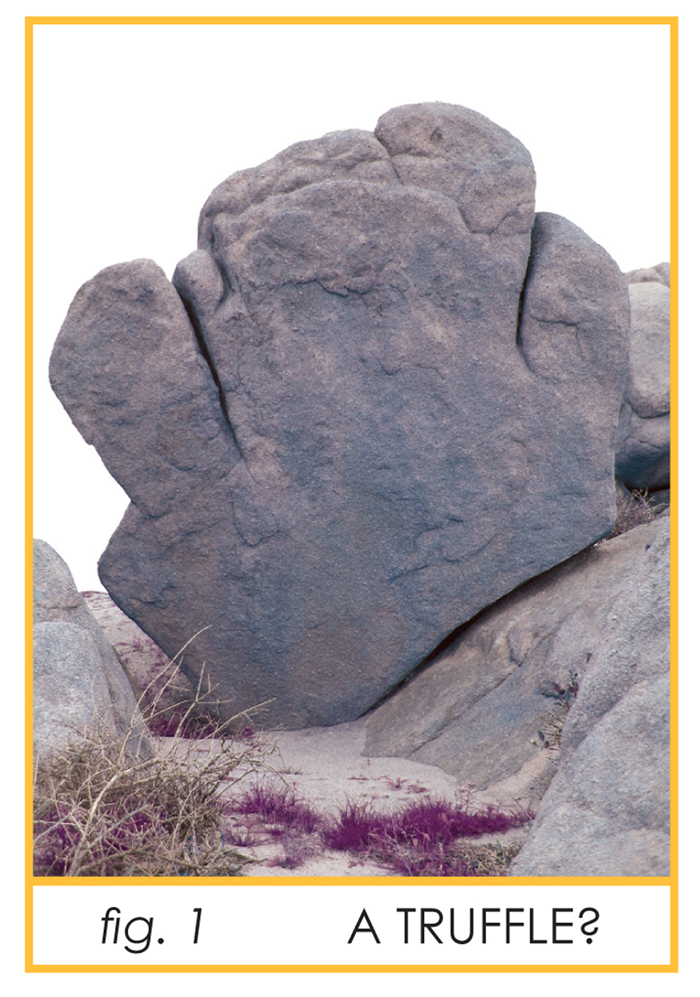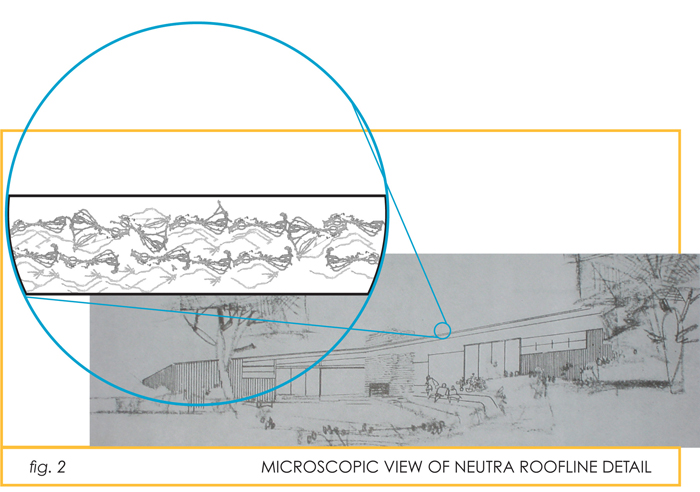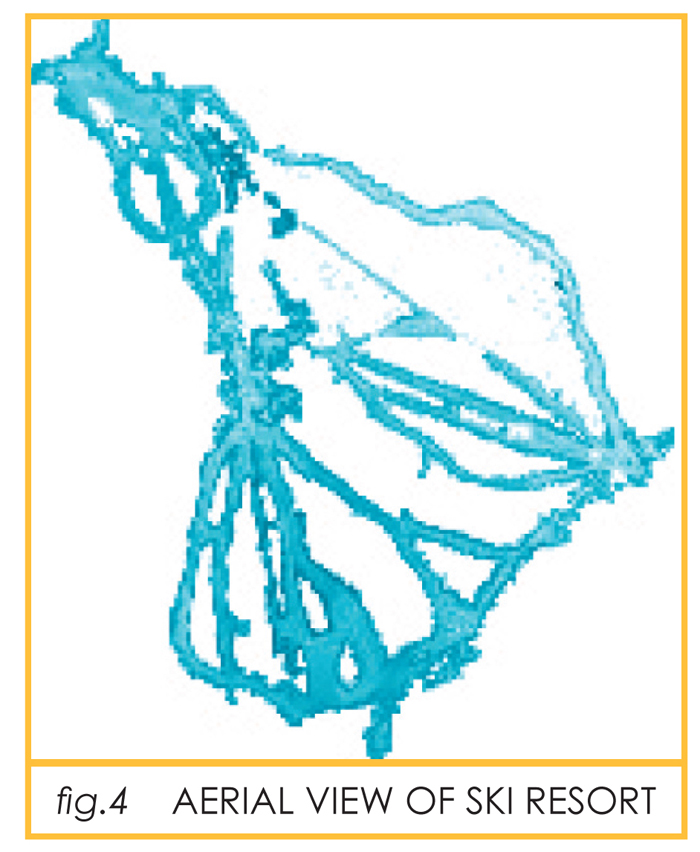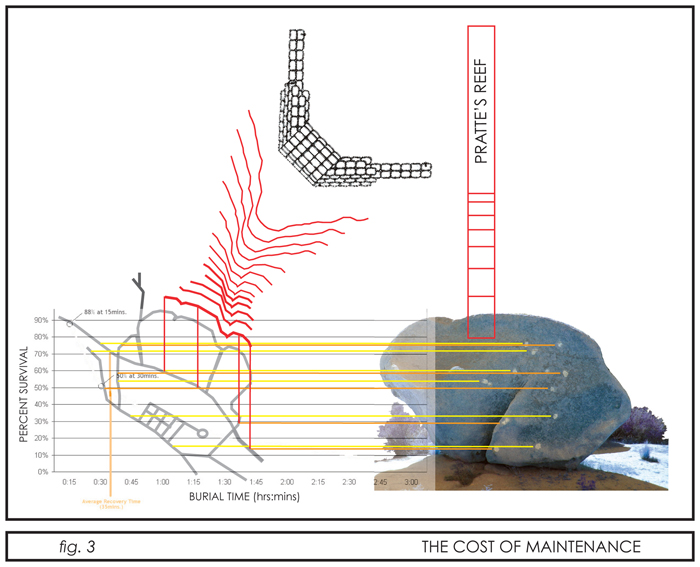It is reasonable to expect that people who suffer the flagrant mismangement of their environment would be invested in sorting out the seemingly opposed forces of nature and culture, but somehow that does little to explain the many recent art projects and exhibitions here in Southern California that have taken the issue on. I’m referring in particular to Gardenlab, High Desert Test Sites 4, the Smithson retrospective at the Museum of Contemporary Art, and the less noticed, but quite nice, Drawn to Yellowstone at the Museum of the American West. Man vs. nature proves to be an unusually resilient, if largely hackneyed, field of interest particularly for a discipline that constantly demands novelty. Or maybe these shows represent a timely reconsideration, proposed as they are by a population situated in the most diverse geographic region in the world at the moment it begins to emerge from its cultural adolescence.

After all, the city of Los Angeles is, more or less, the farthest western outpost of Western civilization. It is a place where democracy, the organizing principle of Western thought, has degenerated in its late stages to a kind of eccentric populism. Here in this sprawling urban dystopia surrounded by deserts, mountains and sea, artists have inherited a mandate to renegotiate the traditions of what is now thought of as “cultural production” with our physical and cultural geography. This is a territory where Western civilization is simultaneously eroding and being renovated within and beyond its practitioners’ realm of command: it is the Extreme Occident—or rather what I call simply, the Oest.
The Oestern Aspect
Recently, while hiking in the deserts east of here, I came across a rock formation that had an uncanny resemblance to a truffle (fig. 1). Coincidentally, this is the subject of a painting I am working on, and the stone formation looked a lot like the painting except it was missing a little knob like growth at the top. This is something that happens commonly when you are working on some piece of artwork: you inevitably begin to see its apparition in your surroundings. Naturally, wanting to complete the picture, I located an appropriately shaped rock and positioned it where the small outgrowth should be. Now I was not sure what I had. Was this a work of art, or was it an imitation of a work of art?1 Did it become a work of art after I altered it? What about before I had applied the rock, but after I saw it resembled something? Even at that point, could you say it was man made? Or after my alteration, could you still say it was “natural”? After all, its figurative resemblance was to just another “natural” object: a fungus. Yet again, the truffle I was painting was imaginary, not one I had seen but one I had made up. It occurred to me that the rock just next to the truffle appeared to be a large potato, and across the wash was one that you would say was unequivocally an oversized loaf of bread. Bread is without question an artifice of man.
I feel encouraged by certain sanctioned pedagogical agents to recognize that what was interesting here was how this object occupied a space between definitions and that this ambiguity is the hallmark of good art. But I’m not interested in what’s between definitions, this inane “interstitial space.” Rather, what does seem notable from a certain point of view-the Oestern aspect-is the coexistence of these contradictory states “and”2 my willingness to find that as being completely unremarkable, I would even say natural.

A Oestern point of view apprehends the concurrency of states of being—that a painting is a flat sculpture and also evidence of a performance-and that it is only a question of emphasis that separates categories of form. A Oestern artist, or just someone who has achieved a tolerance of the environment we share here in Los Angeles, must, if only intuitively, have come to the understanding that the state of contradiction really emphasizes comprehensiveness; it is evidence of affirmation not negation.
The Unintential Field
This is why, here in the Oest, the opposition of Nature and Culture seems to be a contrivance. Am I to believe that the custom built environment man has propped up for his own habitation is not “natural” presumably because there exists in our knowing actions some corruption, some ulterior motives which are counter to the precepts of natural order? There is hardly a finer example of a man-made empire than this one we inhabit, the sprawling urban constellation of Los Angeles. Mutation, competition, cruelty, resource consumption, flow, infinity, terror, restoration, corruption and decay are all natural forces that inform the development of this city. This vast field of man’s own making, this “second nature,” is made up of, resembles, mimics and even functions in accordance with what we think of sentimentally as the Natural world. So where even to draw a line between them?
My recommendation is to investigate the line drawing itself. I’m reminded that a number of luminary aestheticians have observed that there are no straight lines in Nature, the implication being that the ugly fascism of a straight line must be an invention of man. To examine this axiom, I took for example the straightest locally available line I knew of–the schematic drawing of the roofline of a Neutra house (fig. 2)—and examined it up close, through a microscope. I was not surprised that upon magnification the straight line appeared broken at the edges and made up of many tiny arcs and warbles, unnoticeable to the naked eye.
This minor revelation suggests that there may be something arbitrary about our notion of a Culture that is separate from Nature. The man-made world, after all, with all of its incongruities and injustices, is just an expression of our own Natural selves. All of it in fact is “Nature”–the Mother Navel orange tree in Riverside now on its third root graft, the “artificial” surf break at El Segundo, the reclaimed Los Angeles River–its just that some of it has been effected by man’s intentions. What we need to understand is that the sum total of those intentions, our culture, is part of the Natural world, and that the sentimental notion of a pure “and”3 untainted Nature is itself a fabrication—a product of that culture—which only serves as a refuge from the disaffection with the environment of our own construction.
We persist in forcing this opposition since the aim of culture, after all, is to gain control over the uncertainty of Nature—its maddening and even terrifying lack of intention. Even the burden of self-consciousness and the construction of culture itself have failed to deliver us from its indifference. Really, the distinction we need to be concerned with is the matter of intention.
The Intentional Field
Not too long ago I went for a surf out at Dockweiler State Beach to try out that artificial surfing reef. It had just been completed, the first of its kind in the United States.
Surfers, who consider themselves as having a special relationship with Nature, have expressed ambivalence toward the idea of riding “artificial” waves. In a bit of offhanded surf-speak lucidity, a friend of mine who had the opportunity to surf alone to his heart’s content on a “perfect” artificial wave in a wave park in Japan, afterward summed up his experience: “Only the real is unreal.”
I felt more or less in accord with that sentiment, but how would I know without hooking into a few artificial waves myself? Unfortunately, upon arriving at Dockweiler, I was unable to find any rideable waves where the reef was allegedly built. In fact, no one really seemed interested to know where it was exactly.
Just up the beach from Pratte’s, though, I noticed a pack of surfers trading waves on a rather scrappy looking, unusual, but occasionally ridden wave known as Shit Pipe. It’s a wobbly peak that shoulders along a submerged sewage outflow pipe before hollowing out into a short, high-speed barrel that meets the shorepound in a sudden closeout. Other than its name, it is for the most part a forgettable oddity in wave rich Southern California. But it’s coincidental juxtaposition to Pratte’s reef makes for an interesting contrast: Shit Pipe, too, is a manmade construction. And even though it’s a decidedly second rate break, the experience of surfing Shit Pipe doesn’t suffer for its being “unnatural.” That’s because the wave there is unintentional–it was not made to be surfed. It retains its indifference “and”4 the terrifying quality of randomness: It offers the sublimity of freedom.
What’s significant here is the distinction between the intentional field and the unintentional field. By the intentional field I refer to the physical as well as psychic construction that is the built environment and the web of prompts and expectations that constitute social engagement. The unintentional field is the environment that exists outside of human volition: those forces or the portion of those forces, and their manifestations, beyond our realm of conscious influence. Although they are both completely “natural,” the unintentional environment cannot make evaluations, it is indifferent.

The Orient And The Occident
Keeping this in mind we can understand the concept of Orientalism. Orientalism can be described as the intent to define what is sometimes referred to as the “Other”: a void, the inessential, marginal, passive, derivative, trivial, fertile, entropic, negligent, inadvertant, interrogative, portable—a distraction.
Orientalism is basically the study of the unintentional field by the intentional field. It is a Western discipline and uses a familiar Occidental strategy: obtain knowledge to establish authority, use authority to gain control. The limitation with that strategy, which has become increasingly clear, is that this kind of knowledge can only be compiled “and”5 interpreted within the regimen of its own system. Furthermore, the rational underpinnings “and”6 unacknowledged bias of Orientalism establishes itself in a hegemonic position in relation to its subject that limits severely what can be said about it. That is to say, our understanding of the Orient is very much a construction of the Occident, laid out entirely in Occidental terms, “and”7 in just the same way that Culture has failed to define Nature, Orientalism is unable to describe or fully account for the Orient.
Artmaking, it should be obvious, is essentially an Oriental practice and as such remains marginalized, increasingly confined by an Occidental determination of what it is and does, and has ultimately been brought to the brink of total irrelevancy by the conclusion that it must be above all else useless.
Use
It’s always fun to talk about art’s uselessness. It feels vaguely privileged and enjoyably frivolous to be so concerned with the Useless. The canonization of non-usefulness is no doubt a consequence of art’s great project of the recently passed century-that of determining its own “emancipation”-an unavoidable stage of development both alienating and inspiring in its self-absorption. This goal, as evidenced by the current state of pluralistic production, has been so convincingly realized that the more recently invoked “death of art” seems almost credible.
Yet historically art has, in fact, provided many indispensable functions like furthering notorious political agendas, illustrating religious doctrines and attacking entrenched interests of all kinds, including-and this is now just a sentimentalized memory-the art establishment. In more recent times, art has been relied on for numerous, less palatable functions such as being a lubricator for social advancement, a vehicle for financial enrichment, and a fence for cognoscenti. I have an affinity for a special kind of “company” art that uses painting’s associations with power and taste to render heroic what are not necessarily beneficial industrial practices such as topping trees and docking oil tankers. Art’s increasingly degenerated usefulness “and”8 institutional disarming correlates with the emergence of a new sort of culture industry that engenders the kind of fidelity not seen since the French Academy of the 19th century. This new academie, a product of capitalist laced democracy, is flexible where the old one wasn’t, moving quickly to incorporate any perceived challenges, reupdating what constitutes acceptable content, and leveling its potential impact through institutionalized tolerance. In the kind of irony that underscores the Oestern Aspect, Los Angeles may have the most institutionalized art community of any of the world’s leading art centers. The effect of this is the withdrawal of art from its social contract, which renders it effect less, rarefied, enjoyable, provocative, collectable, an entertainment. The risk in requiring something useful from it is that that would allow art to become not only complicit but vulnerable and inevitably corrupted.
And there is the point: corruption, the cultural manifestation of entropy, is an unsanctioned force of nature. It is an agent of the unintentional field and the antagonist of the Occident and its compensatory countervailing program of maintenance (fig. 3). It inhabits the unincorporated district of the Orient, “and”9 accounts for the inevitable failure of all systems “and”10ideologies of the intentional field that attempt to explain or manage experience to check out with themselves. Because any statement contains within it its own anti-thesis, it must acknowledge the presence of its own hypocrisy if it is to have anything meaningful to relay. To embrace corruption endows the special knowledge that arises only from the compromised negotiations of experience.
Art then can only be said to be useless in an Orientalist sense: fine, uncompromised, not logical, and unreliable-the “Other.” What Oestern art can propose—what living in the Extreme Occident requires—is something else: to abandon the defunct Occidental pursuit of systematic knowledge through research “and”11 experimentation, and press into service the application of art methodologies to obtain the authority and self-possession we so desperately pursue.
Translation
It is first necessary to dispense of the notion that artmaking is a “creative” act. You can’t add matter to the universe, but what you can do is recombine things in unfamiliar ways. That’s really what is meant by “creativity.” This is the stock in trade of a good shoe designer, and certainly part of the MO of good art production as well, but it’s not the distinguishing characteristic-at least not for Oestern art. Artmaking in the Extreme Occident is an activity motivated by curiosity and concerned primarily with translation-translation with the intent to establish authority, to determine and expand the jurisdiction of one’s own sovereignty

The Oestern artist is trying to say something coherent; he senses what it is, but must find the means to iterate it in language that can be responded to. The impetus originates as a formless eidetic prompt whose pre-existence confirms we are not talking about “creation” but a kind of reification: an embodiment in the sense of “possession,” with all of its attendant and adjacent meanings. He is a distracted explorer seeking special knowledge–but not in the Occidental sense–rather what you might call apprehension. This is the kind of knowledge that occurs in the moment just prior to ascertaining a taxonomic identification of what something is, who its neighbors are, and what its name might be. It becomes apparent in the mind’s eye, “and”12 yet can have the qualities of any of the senses. This kind of sensory comprehension is knowledge in the round, it breathes and communicates with its vicinity, it is fluid and self-altering through time.
The Oestern artist working in the extreme Occident is drawn to the interface of the intentional and unintentional fields. This territory can be described by the shape of the trails of a commercial ski mountain (fig.4), or the pattern of chalk on a bouldering problem (fig. 3). These points of contact describe a conversation between something existing “and”13 something proposed, the Orient and the Occident, Nature and Culture. The Oestern artist responds to existing conditions encountered during productive wanderings. Anomalous obstacles in the mute field of the unintentional provoke alterations. Accidents are naturalized by cooption, “and”14 instinct replaced with intuition. He is a wandering taxidermist, distending, incising, mending, packing and reanimating the skins of uniterated forms to unclassified families. His actions leave behind artifacts, relics of an occurrence, trophies that emphasize their provenance and apprehend the conditions of their context at the moment of their becoming. They emphasize the physical, comprehensive, vertically integrated, location-specific, empirical. And as soon as these translations are made they begin to depreciate, as anything worthy of being stated is inherently unstable, born of corruption, in a continuous state of rearrangement. In the Oest it is advisable to constantly reinterpret an artwork. I don’t mean a re-evaluation as taste evolves, but an adaptive reuse–a complete release “and”15 reuptake, a retitling and even alteration of the actual art object if it is to remain vital.

A Cairn
Talking about what art ought to be is in the end too pretentious for a Oesterner. Art the word has been worn out. It has been co-opted by all of its adjacent disciplines, made precious and ridiculous and concessioned out as an agent of the enemy. To try to redefine it now is akin to the French legislation that outlawed Anglicisms—it is not only hopeless but marginalizes anyone interested in trying. What is needed, and what the Oest can provide, is a different signifier that points to a different, though overlapping, discipline. A word is too vulnerable and too restrictive. What I propose is a symbol (fig.5) that points to a field of intersections. This form is a cairn, it is my bibliography, an index of all the contributors to its becoming. It is a junction, an accumulation of ampersands—a neighborhood of counter-canceling ideologies. It does not refer precisely to the practice formerly known as art, but the possibility of apprehending experience as it presents itself. It reminds us that creativity is a pretense, that all ideologies are suspect, and that we can only talk about emphasis when discussing the nature of things.

I just returned from an art-making venture in the High Sierra. I made an artwork that required a tremendous physical output to produce so I thought it would be fair to require a like effort for those who are so inclined to consume it. I balanced it on a small knob on the rock wall between two climbing routes on the north face of Half Dome in Yosemite Valley. Specifically, it’s between the 13th pitch of the Kali Yuga and the 14th pitch of Tis-a-sak. The cracks you climb to get there and view it will remind you of the truffle.
And the truffle is also a map of meltwater drainages, a trail map that might also be a road map, a system of communication that relays the fracture in all systems which rely on the random and accidental to erase and evolve themselves (fig.6).
Christopher James is an artist based in Los Angeles where he also launches projects from The Lazy J Center for Coy Aesthetics.
